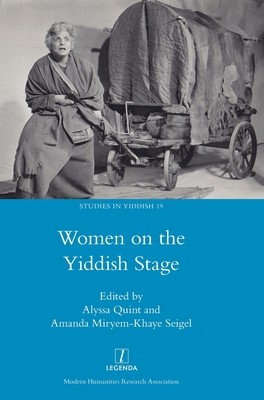
- Išsiųsime per 10–14 d.d.
- Leidėjas: Legenda
- ISBN-10: 1839541369
- ISBN-13: 9781839541360
- Formatas: 17 x 24.4 x 2.1 cm, kieti viršeliai
- Kalba: Anglų
- Extra -15 % nuolaida šiai knygai su kodu: ENG15
Women on the Yiddish Stage (el. knyga) (skaityta knyga) | knygos.lt
Atsiliepimai
Aprašymas
The integration of women into public Jewish performance (Yiddish-language theater by 1877 and Hebrew-language theater by about 1918) was a revolution in modern Jewish culture. While a great deal of seasoned Yiddish-speaking male talent preexisted theater in the form of cantors, choristers, and tavern singers, East European Jewish women had no experience participating in public Jewish performance. From the theater's first days, women assumed positions of authority, security, and visibility in great numbers. Rapidly, by the 1890s, when the center of the Yiddish theater shifted from cities throughout Romania and the Russian Empire where it first launched in the late 1870s to cities across the globe - including London, Buenos Aires, and New York City by the turn of the century - substantial numbers of female Yiddish actors enjoyed celebrity on par with their male counterparts.
Women on the Yiddish Stage presents an array of scholarly essays that challenge the existing historical accounting of the modern Yiddish theater; highlight pioneering artists, creators, and impresarios; and map sources and methodologies of this rich area of forgotten history.
EXTRA 15 % nuolaida su kodu: ENG15
Akcija baigiasi už 5d.23:17:35
Nuolaidos kodas galioja perkant nuo 10 €. Nuolaidos nesumuojamos.

- Leidėjas: Legenda
- ISBN-10: 1839541369
- ISBN-13: 9781839541360
- Formatas: 17 x 24.4 x 2.1 cm, kieti viršeliai
- Kalba: Anglų Anglų
The integration of women into public Jewish performance (Yiddish-language theater by 1877 and Hebrew-language theater by about 1918) was a revolution in modern Jewish culture. While a great deal of seasoned Yiddish-speaking male talent preexisted theater in the form of cantors, choristers, and tavern singers, East European Jewish women had no experience participating in public Jewish performance. From the theater's first days, women assumed positions of authority, security, and visibility in great numbers. Rapidly, by the 1890s, when the center of the Yiddish theater shifted from cities throughout Romania and the Russian Empire where it first launched in the late 1870s to cities across the globe - including London, Buenos Aires, and New York City by the turn of the century - substantial numbers of female Yiddish actors enjoyed celebrity on par with their male counterparts.
Women on the Yiddish Stage presents an array of scholarly essays that challenge the existing historical accounting of the modern Yiddish theater; highlight pioneering artists, creators, and impresarios; and map sources and methodologies of this rich area of forgotten history.




Atsiliepimai